Our new two speed delivery vehicle is getting away to a racing start
Page 222
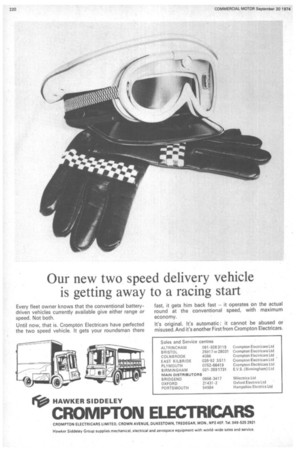
Page 223
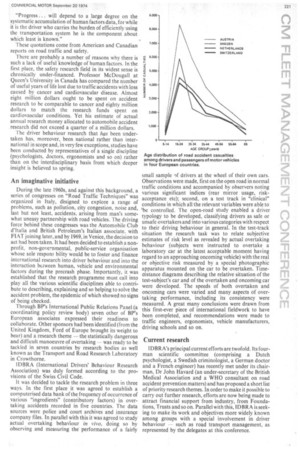
Page 224
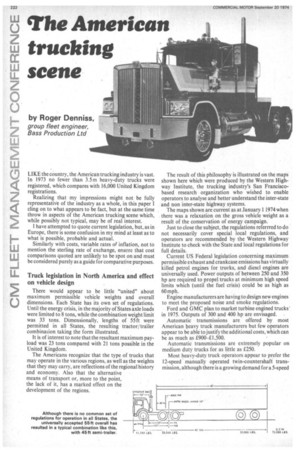
Page 225
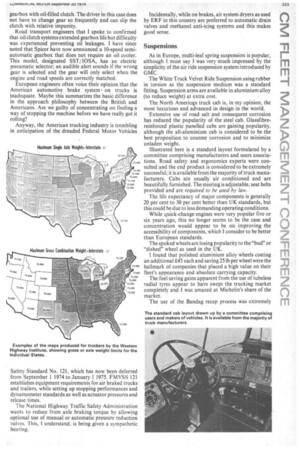
Page 226

Page 229
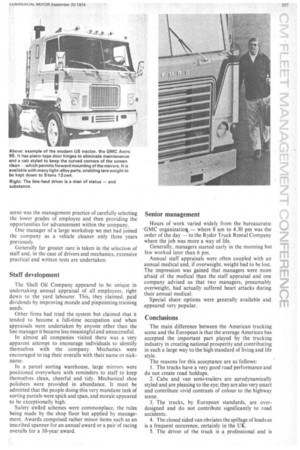
Page 230
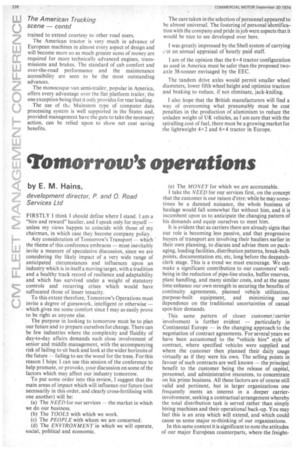
If you've noticed an error in this article please click here to report it so we can fix it.
Every fleet owner knows that the conventional batterydriven vehicles currently available give either range or speed. Not both.
Until now, that is. Crompton Electricars have perfected the two speed vehicle. It gets your roundsman there fast, it gets him back fast — it operates on the actual round at the conventional speed, with maximum economy.
It's original. It's automatic : it cannot be abused or misused. And it's another First from Crompton Electricars.
"Progress .. . will depend to a large degree on the systematic accumulation of human factors data, for while it is the driver who carries the burden of efficiently using the transportation system he is the component about which least is known."
These quotations come from American and Canadian reports on road traffic and safety.
There are probably a number of reasons why there is such a lack of useful knowledge of human factors. In the first place, the safety research field in its widest sense is chronically under-financed. Professor McDougall at Queen's University in Canada has compared the number of useful years of life lost due to traffic accidents with loss caused by cancer and cardiovascular disease. Almost eight million dollars ought to be spent on accident research to be comparable to cancer and eighty million dollars to match the research funds spent on cardiovascular conditions. Yet his estimate of actual annual research money allocated to automobile accident research did not exceed a quarter of a million dollars.
The driver behaviour research that has been undertaken has, moreover, been national rather than inter national in scope and, in very few exceptions, studies have been conducted by representatives of a single discipline (psychologists, doctors, ergonomists and so on) rather than on the interdisciplinary basis from which deeper insight is believed to spring.
An imaginative initiative
During the late 1960s, and against this background, a series of congresses on "Road Traffic Techniques" was organized in Italy, designed to explore a range of problems, such as pollution, city congestion, noise and, last but not least, accidents, arising from man's somewhat uneasy partnership with road vehicles. The driving force behind these congresses was the Automobile Club d'Italia and British Petroleum's Italian associate, with FIAT joining later, and by 1969, in Venice, the decision to act had been taken. It had been decided to establish a nonprofit, non-governmental, public-service organisation whose sole respons bility would be to foster and finance international research into driver behaviour and into the interaction bctween human, vehicle and environmental factors during the precrash phase. Importantly, it was established that the research programme must call into play all the various scientific disciplines able to contribute to describing, explaining and so helping to solve the accident problem, the epidemic of which showed no signs of being checked.
Through BP's International Public Relations Panel (a coordinating policy review body) seven other of BP's European associates expressed their readiness to collaborate. Other sponsors had been identified (from the United Kingdom, Ford of Europe brought its weight to bear) and a research theme — the statistically dangerous and difficult manoeuvre of overtaking — was ready to be tackled in seven countries by research bodies as well known as the Transport and Road Research Laboratory in Crowthorne.
IDBRA (International Drivers' Behaviour Research Association) was duly formed according to the provisions of the Swiss Civil Code.
It was decided to tackle the research problem in three ways. In the first place it was agreed to establish a computerised data bank of the frequency of occurrence of various "ingredients" (contributory factors) in overtaking accidents recorded in five countries. The data sources were police and court archives and insurance company files. In parallel with this it was agreed to study actual overtaking behaviour in vivo, doing so by observing and measuring the performance of a fairly small sample if drivers at the wheel of their own cars. Observations were made, first on the open road in normal traffic conditions and accompanied by observers noting various significant indices (rear mirror usage, riskacceptance etc); second, on a test track in "clinical" conditions in which all the relevant variables were able to be controlled. The open-road study enabled a driver typology to be developed, classifying drivers as safe or unsafe overtakers and into various categories with respect to their driving behaviour in general. In the test-track situation the research task was to relate subjective estimates of risk level as revealed by actual overtaking behaviour (subjects were instructed to overtake a laboratory car at the latest acceptable moment having regard to an approaching oncoming vehicle) with the real or objective risk measured by a special photographic apparatus mounted on the car to be overtaken. Timedistance diagrams describing the relative situation of the test-subject's car and of the overtaken and oncoming car were developed. The speeds of both overtaken and oncoming cars were varied and many aspects of overtaking performance, including its consistency were measured. A great many conclusions were drawn from this first-ever piece of international fieldwork to have been completed, and recommendations were made to traffic engineers, ergonomists, vehicle manufacturers, driving schools and so on.
Current research
IDBRA's principal current efforts are twofold. Its fourman scientific committee (comprising a Dutch psychologist, a Swedish criminologist, a German doctor and a French engineer) has recently met under its chairman, Dr John Havard (an under-secretary of the British Medical Association and a WHO consultant on road accident prevention matters) and has proposed a short list of priority research themes. In order to make it possible to carry out further research, efforts are now being made to attract financial support from industry, from Foundations, Trusts and so on. Parallel with this, ID BRA is seeking to make its work and objectives more widely known among groups with a special involvement in driver behaviour — such as road transport management, as represented by the delegates at this conference. LIKE the country, the American trucking industry is vast. In 1973 no fewer than 3.5 m heavy-duty trucks were registered, which compares with 16,000 United Kingdom registrations.
Realizing that my impressions might not• be fully representative of the industry as a whole, in this paper I cling on to what appears to be fact, but at the same time throw in aspects of the American trucking scene which, while possibly not typical, may be of real interest.
I have attempted to quote current legislation, but, as in Europe, there is some confusion in my mind at least as to what is possible, probable and actual.
Similarly with costs, variable rates of inflation, not to mention the sterling rate of exchange, ensure that cost comparisons quoted are unlikely to be spot on and must be considered purely as a guide for comparative purposes.
Truck legislation in North America and effect on vehicle design
There would appear to be little "united" about maximum permissible vehicle weights and overall dimensions. Each State has its own set of regulations. Until the energy crisis, in the majority of States axle loads were limited to 8 tons, while the combination weight limit was 33 tons. Dimensionally, lengths of 55ft were permitted in all States, the resulting tractor/ trailer combination taking the form illustrated.
It is of interest to note that the resultant maximum payload was 23 tons compared with 21 tons possible in the United Kingdom.
The Americans recognize that the type of trucks that may operate in the various regions, as well as the weights that they may carry, are reflections of the regional history and economy. Also that the alternative means of transport or, more to the point, the lack of it, has a marked effect on the development of the regions. The result of this philosophy is illustrated on the maps shown here Which were produced by the Western Highway Institute, the trucking industry's San Franciscobased research organization who wished to enable operators to analyse and better understand the inter-state and non inter-state highway systems.
The maps shown are current as at January 1 1974 when there was a relaxation on the gross vehicle weight as a result of the conservation of energy campaign.
Just to close the subject, the regulations referrred to do not necessarily cover special local regulations, and operators are recommended by the Western Highway Institute to check with the State and local regulations for full details.
Current US Federal legislation concerning maximum permissible exhaust and crankcase emissions has virtually killed petrol engines for trucks, and diesel engines are universally used. Power outputs of between 250 and 350 hp are required to propel trucks at minimum high speed limits which (until the fuel crisis) could be as high as 60 mph.
Engine manufacturers are having to design new engines to meet the proposed noise and smoke regulations.
• Ford and GM C plan to market turbine engined trucks ' in 1975. Outputs of 300 and 400 hp are envisaged.
Automatic transmissions are offered by most American heavy truck manufacturers but few operators appear to be able to justify the additional costs, which can be as much as £90041,500.
Automatic transmissions are extremely popular on medium duty trucks for as little as £250.
Most heavy-duty truck operators appear to prefer the 12-speed manually operated twin-countershaft transmission, although there is a growing demand for a 5-speed gearbox with oil-filled clutch. The driver in this case does not have to change gear so frequently and can slip the clutch with relative impunity.
Road transport engineers that I spoke to confirmed that oil clutch systems extended gearbox life but difficulty was experienced preventing oil leakages. I have since noted that Spicer have now announced a 10-speed semiautomatic gearbox that does not require an oil cooler. This model, designated SST/ IOSA, has an electric pneumatic selector; an audible alert sounds if the wrong gear is selected and the gear will only select when the engine and road speeds are correctly matched.
European engineers often voice their opinion that the American automotive brake system on trucks is inadequate. Maybe this summarizes the basic difference in the approach philosophy between the British and Americans. Are we guilty of concentrating on finding a way of stopping the machine before we have really got it rolling?
Anyway, the American trucking industry is trembling in anticipation of the dreaded Federal Motor Vehicles Safety Standard No. 121, which has now been deferred from September 1 1974 to January 11975. FMVSS 121 establishes equipment requirements for air braked trucks and trailers, while setting up stopping performances and dynamometer standards as well as actuator pressures and release times.
The National Highway Traffic Safety Administration wants to reduce from axle braking torque by allowing optional use of manual or automatic pressure reduction valves. This, I understand, is being given a sympathetic hearing, Incidentally, while on brakes, air system dryers as used by ERF in this country are preferred to automatic drain valves and methanol anti-icing systems and this makes good sense.
Suspensions
As in Europe, multi-leaf spring suspension is popular, although I must say I was very much impressed by the simplicity of the air ride suspension system introduced by GMC.
The White Truck Velvet Ride Suspension using rubber in torsion as the suspension medium was a standard fitting. Suspension arms are available in aluminium alloy (to reduce weight) at extra cost.
The North Americain truck cab is, in my opinion, the most luxurious and advanced in design in the world.
Extensive use of road salt and consequent corrosion has reduced the popularity of the steel cab. Glassfibrereinforced plastic panelled cabs are gaining popularity, although the all-aluminium cab is considered to be the best proposition to counter corrosion and to minimize unladen weight.
Illustrated here is a standard layout formulated by a committee comprising manufacturers and users associations. Road safety and ergonomics experts were consulted and the end product is considered to be extremely successful; it is available from the majority of truck manufacturers. Cabs are usually air conditioned and are beautifully furnished. The steering is adjustable, seat belts provided and are required to be used by law.
The life expectancy of major components is generally 20 per cent to 30 per cent better than UK standards, but this could be due to less demanding operating conditions.
While quick-change engines were very popular five or six years ago, this no longer seems to be the case and concentration would appear tobe on improving the accessibility of components, which I consider to be better than European standards.
The spoked wheels are losing popularity to the "bud" or "dished" wheel as used in the UK.
I found that polished aluminium alloy wheels costing an additional £45 each and saving 25 lb per wheel were the hallmark of companies that placed a high value on their fleet's appearance and absolute carrying capacity.
The fuel saving gains apparent from the use of tubeless radial tyres appear to have swept the trucking market completely and I was amazed at Michelin's share of the market.
The use of the Bandag recap process was extremely popular and mileages of 120,000 miles between recaps are claimed. I might add that my own company's experience has borne these figures out.
Most popular vehicle type
Legislation, safety, payload economics and security of load have dictated the type of tractor/ box trailer cornbination that is now most popular. The tractor is a 6 x 4 configuration. Individual axles do not have to exceed 8 tons and the resulting tractor is extremely stable with more than adequate tyre and brake capacity.
Tyres may be reduced in size, enabling the overall height to be reduced if required, with resultant improvement in load stability.
According to Fruehauf, four out of every five semitrailers sold in North American in 1972 were of monocoque chassisless van construction.
The standard 40ft van costs as little as £1,800 and weighs only 5 tons. The vans are designed for fork lift truck loading from the rear.
The advantages of the van over flat platform semitrailers are: I. Improved appearance and company image.
2. Load security against theft.
3. Load stability.
4. Protection from the elements.
5. Lower aerodynamic drag.
6. Elimination of high cost tarpaulins, ropes, straps, which are frequently lost or stolen. Disadvantages of the van appear to be: 1. Restriction to end loading.
2. Body prone to damage.
Information systems
I am unable to report any startling new management control ratios or systems. The firms that we contacted tended to use vehicle class cost per mile statistics or cost per day per unit to highlight low utilization, as is common practice here, the overall statistics being broken down into standing and running costs and comparisons made between locations and vehicle types. Maintenance costs were broken down by cause of expense.
In-house computer vehicle-maintenance data processing systems were usually unsuccessful in that they tended to lack priority over other "main function" company requirements.
Nevertheless, transport management uses computers extensively for compiling and printing out basic operation and maintenance costs, i.e. preventive maintenance, fuel, oil, tyres, painting, depreciation, etc. and makes extensive use of firms such as Mainstem Systems Ltd, who provide this service.
I was particularly interested in the Mainstem maintenance computer-linked analysis system, whose package deal enabled most management accounting information to be recorded and also provided the facility to analyse some 80 vehicles component failure! maintenance frequencies.
The vehicle maintenance department of United Airlines in Chicago had found that the Mainstem system had enabled them to reduce staff and highlight weaknesses in their own fitting department which were then overcome by suitable training.
The great advanta'ge offered by these companies providing computer-linked operating systems is that they can be used for a short period as an audit and then dropped without the need for creating either additional jobs or redundancy.
The driver
In North America, the "line haul" driver enjoys the social status of a professional. He can earn in excess of £100 per week. The tractor he drives is valued in excess of £10,000 and the trailer £2,000.
The driver has to carry out a mandatory vehicle safety check every eight hours by law. He is not permitted to consume alcohol for a period of four hours before he drives his truck. He has to be familiar with State laws and be able to alter his trailer bogie location to suit individual State requirements.
Line-haul driver selection can take as long as one week and includes extensive medical examination.
One firm we met subjected applicants to an outward bound course in the Rockies and also used a lie detector, which we later found was not uncommon.
Driver training courses include a 10-week correspondence course and aptitude tests before acceptance to the practical four-week training section. Driver aptitude tests seem to be commonplace, great emphasis being put on previous experience. One-year refresher courses are the order of the day and accident-free periods are rewarded by various bonus schemes, including Green Shield Stamps.
The mechanic
The mechanic does not appear to enjoy the same high social status as the line-haul driver although his rate of pay in some cases is slightly higher than that of the driver. There is a shortage of truck mechanics in North America. Top rates of pay can only be allocated to union-approved mechanics.
The trade unions insist that the mechanic must have built up a complete and comprehensive tool kit, This tool kit carries more weight than a recognized apprenticeship. The kit comprises a mobile tool trolley with a number of drawers which have to contain such specialist tools as internal dial test indicator gauges, impact wrenches, torque wrenches, scrapers, files, taps and dies.
Incentive, schemes in workshops are not commonly used, because of union resistance.
The mechanics I met were of average standard but with a high degree ofjob interest and, clearly, very well trained. Management favoured on-job training, no doubt due to the high rates of mechanics' pay.
Desk-top projectors, positioned in full view of the men as they waited to clock out, appeared to be a good idea. One very noticeable aspect of the American industrial scene was the management practice of carefully selecting the lower grades of employee and then providing the opportunities for advancement within the company.
One manager of a large workshop we met had joined the company as a vehicle cleaner only three years previously.
Generally far greater care is taken in the selection of staff and, in the case of drivers and mechanics, extensive practical and written tests are undertaken.
Staff development
The Shell Oil Company appeared to be unique in Undertaking annual appraisal of all employees, right down to the yard labourer. This, they claimed, paid dividends by improving morale and pinpointing training needs.
Other firms had tried the system but claimed that it tended to become a full-time occupation and when appraisals were undertaken by anyone other than the line manager it became less meaningful and unsuccessful.
In almost all companies visited there was a very apparent attempt to encourage individuals to identify themselves with the company. Mechanics were encouraged to tag their overalls with their name or nickname.
In a parcel sorting warehouse, large mirrors were positioned everywhere with reminders to staff to keep themselves clean, cheerful and tidy. Mechanical shoe polishers were provided in abundance. It must be admitted that the people doing this very mundane task of sorting parcels were spick and span, and morale appeared to be exceptionally high.
Safety award schemes were commonplace, the rules being made by the shop floor but applied by management. Awards comprised rather minor items such as an inscribed spanner for an annual award or a pair of racing overalls for a 10-year award.
Senior management
Hours of work varied widely from the bureaucratic 'GMC organizatiok — where 8 am to 4.30 pm was the order of the day — to the Ryder Truck Rental Company where the job was more a way of life.
Generally, managers started early in the morning but few worked later than 6 pm.
Annual staff appraisals were often coupled with an annual medical and, if overweight, weight had to be lost. The impression was gained that managers were more afraid of the medical than the staff appraisal and one company advised us that two managers, presumably overweight, had actually suffered heart attacks during their annual medical.
Special share options were generally available and appeared very popular.
Conclusions
The maindifference between the American trucking scene and the European is that the average American has accepted the important part played by the trucking industry in creating national prosperity and contributing in such a large way to the high standard of living and life style.
The reasons for this acceptance are as follows: I. The trucks have a very good road performance and do not create road holdups.
2. Cabs and van semi-trailers are aerodynamically styled and are pleasing to the eye; they are also very smart and contribute vivid contrasts of colour to the highway scene.
3. The trucks, by European standards, are overdesigned and do not contribute significantly to road accidents.
4. The closed sided van obviates the spillage of loads as is a frequent occurence, certainly in the UK.
5. The driver of the truck is a professional and is The American Trucking scene — contd trained to extend courtesy to other road users.
The American tractor is very much in advance of European machines in almost every aspect of design and will become more so as much greater sums of money are required for more technically advanced engines, transmissions and brakes. The standard of cab comfort and over-the-road performance and the maintenance accessibility are seen to be the most outstanding advances.
The monocoque van semi-trailer, popular in America, offers every advantage over the flat platform trailer, the one exception being that it only provides for rear loading.
The use of the. Mainstem type of computer data processing system is well supported in the States and, provided management have the guts to take the necessary action, can be relied upon to show net cost saving benefits. The care taken in the selection of personnel appeared to be almost universal. The fostering of personal identification with the company and pride in job were aspects that it would be nice to see developed over here.
I was greatly impressed by the Shell system of carrying cut an annual appraisal of hourly paid staff.
I am of the opinion that the 6 x 4 tractor configuration as used in America must be safer than the proposed twoaxle 38-tonner envisaged by the EEC.
The tandem drive axles would permit smaller wheel diameters, lower fifth wheel height and optimize traction and braking to reduce, if not eliminate, jack-knifing.
I also hope that the British manufacturers will find a way of overcoming what presumably must be cost penalties in the production of aluminium to reduce the unladen weight of UK vehicles, as I am sure that with the spiralling cost of fuel, there must be a growing market for the lightweight 4. 2 and 6. 4 tractor in Europe.




































































































































































































































































































































































